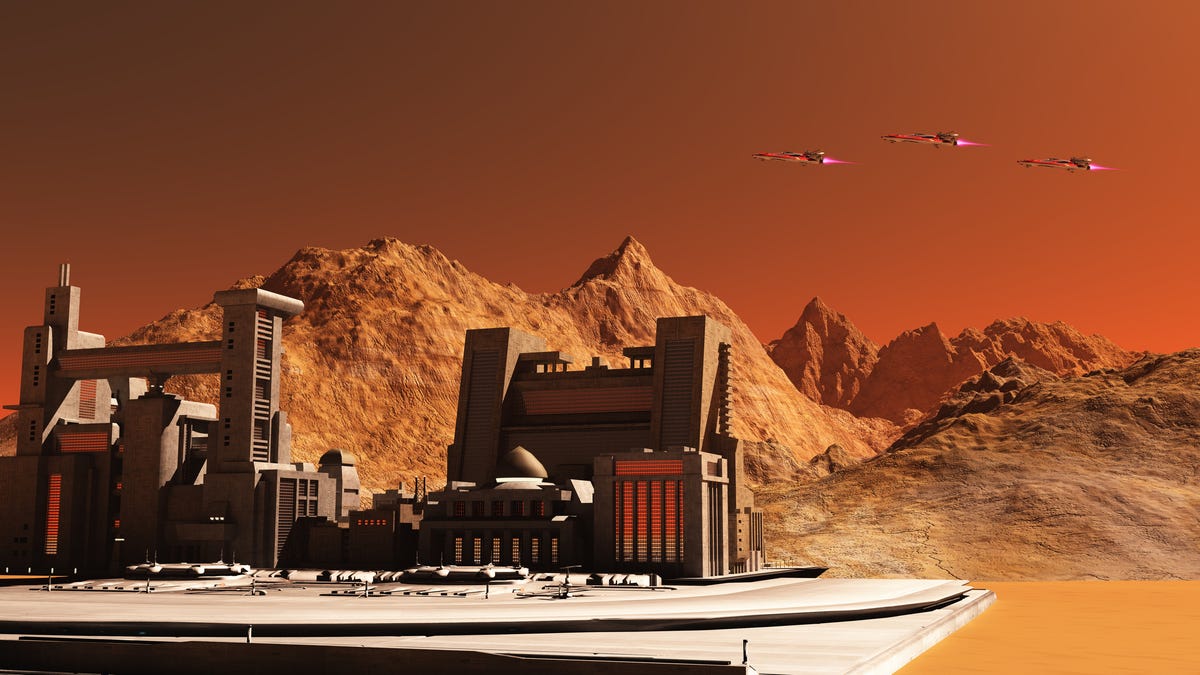Scientists Might Build Your Future Martian Home With Bacteria
To build a thriving Martian civilization by 2050, we'll need somewhere to live -- and it might be inside buildings made of microbes.

Imagine living amid a pile of bacteria.
Humanity's wide-eyed vision of settling Mars might no longer be a sci-fi fantasy. NASA projects 2030 for when the first Martian steps will be taken and SpaceX CEO Elon Musk recently tweeted a simple "2029" to signal his more optimistic outlook. By 2050, Musk even believes a city of 1 million people will exist on the red planet.
It's all incredibly exciting, or maybe terrifying, depending on how you look at it. But either way, if humans hope to live on Mars, step one is probably figuring out where exactly we're going to live.
That's why, last week in the journal PLoS ONE, scientists working with the Indian Space Research Organization announced that an innovative, albeit slightly creepy, piece of equipment can put together a few Martian homes: Bacteria bricks
Basically, they suggest combining Martian soil with a gel-like material known as guar gum, urea, nickel chloride and a bacteria strain called Sporosarcina pasteurii to make a moldable slurry.
For a proof-of-principle prototype, the researchers used Martian soil simulant because, well, we obviously don't have any actual Martian soil to work with. But the simulant is nearly identical to the real thing, and in this bacteria-laced goop, the microbes performed two vital mechanisms. They converted the urea into crystals of calcium carbonate and secreted a sticky substance called a biopolymer.
Combined, those final products generated a sort of cement that held the Martian soil strongly together. The nickel chloride was also pretty key for the mixture -- it helped the bacteria grow and thrive despite the Martian soil's high iron content, which can be toxic to organisms.
Shape this microbial cement-like sludge into blocks and you get viable "space bricks," as the team calls it.
Space bricks made of Martian soil simulant.
Plus, as an added benefit, the researchers saw their bacteria method reducing the porosity, or holey-ness, of the Martian soil. Usually, this feature is a major obstacle for developing bricks from the Mars landscape, they say.
"The bacteria seep deep into the pore spaces, using their own proteins to bind the particles together, decreasing porosity and leading to stronger bricks," Aloke Kumar, an associate professor in the Department of Mechanical Engineering at the Indian Institute of Science and co-author of the paper said in a news release.
Kumar and fellow researchers came up with the concept as an offshoot of their previous work, which dealt with making lunar bricks in the name of eventual moon bases. With the moon rocks, though, the team could make only a cylindrical shape. Martian space bricks, on the other hand, can procure complex shapes.
Going forward, the team says it intends to send a few bacterial space bricks straight into space along with a future ISRO mission. That way, they can study if and how these microbes will operate in microgravity. Until then, the team is investigating the impact of a Martian atmosphere, which is 100 times thinner than and very chemically different from Earth's, on their invention by simulating Mars-like conditions in a lab-based sealed chamber.
"I'm so excited that many researchers across the world are thinking about colonizing other planets," Kumar said. "It may not happen quickly, but people are actively working on it."

